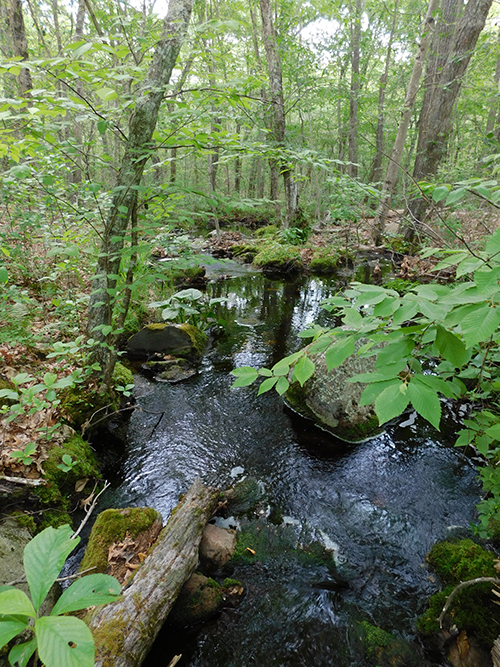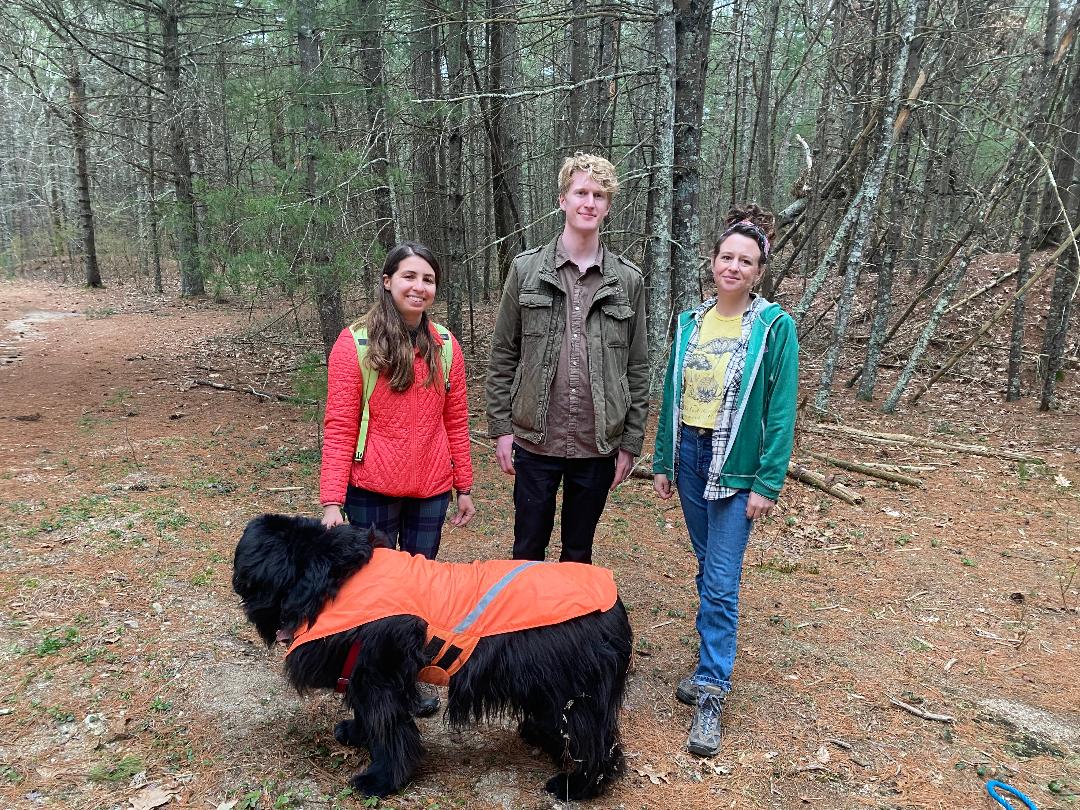R.I. Audubon Expands Land Protection With Two New Land Donations
January 22, 2024

Deep in a densely forested 300-acre parcel of land in North Kingstown, R.I., lies the headwaters of the Saugatucket River. A mix of tree species, including old American beech, yellow birch, and white pine fill the landscape that also contains wetlands and provides a protected home for native birds and wildlife. Owls, woodpeckers, warblers, and numerous other bird species use the property year-round or on migration stop-overs. The wetlands and streams provide breeding grounds for vulnerable dusky and two-lined salamanders and other aquatic species.
Congdon Wood’s proximity to other protected areas creates a conservation greenway, making it even more valuable for birds and other wildlife.
“The size of this wildlife refuge and the fact that it connects to other protected areas explains the invaluable role it will play in Rhode Island conservation efforts,” Audubon Society of Rhode Island executive director Jeff Hall said. “These large tracts of donated land are few and far between these days, but they leverage Audubon’s ability to improve the ecosystem for birds, wildlife, and people.”
Congdon Wood is now the Audubon Society of Rhode Island’s fourth-largest wildlife refuge within the 9,800 acres of property that the organization permanently protects in Rhode Island and nearby Massachusetts. Donated to Audubon by a generous family who wished the land to remain protected from development, the property becomes a major acquisition and hub for what Audubon hopes will be even more protected natural habitat.
A sizable stretch of the Saugatucket River lies within the property. The river flows south toward Point Judith Pond and, ultimately, to Block Island Sound.
“We know that the portion of the Saugatucket found on this property is very clean and untouched by human development, that’s why native brook trout thrive in these waters,” Audubon senior director of conservation Scott Ruhren said. “From Congdon Wood, clean water is carried south by the river and supports human recreational activities, as well as the marine environment.”
Ruhren also noted that the undeveloped land that surrounds the river in Congdon Wood provides flood mitigation, with nature absorbing stormwater and river overflow during intense storms brought on by climate change.
Due to the lack of a public access point, Audubon will use the property for research, to monitor populations of threatened bird species, and develop habitat management plans through its Avian Research Initiative. The organization will also engage graduate and undergraduate students on the property in the study of conservation management.
In addition to Congdon Wood, Audubon also recently received a second parcel from a generous donor in Coventry. The donor’s 5-acre tract enabled Audubon to enlarge its Perched Boulder Woods Wildlife Refuge to 58 acres.
“This donation merges seamlessly with a wildlife refuge that Audubon already monitors and protects,” Ruhren said. “The donation is leveraging our abilities to conserve and protect critical wildlife habitat.”
Hall makes it a priority to collaborate with people who are considering donating their land so it will be permanently protected.
“Every piece of land has its own story and history to tell through the people donating it, and every acre of land is critical to help Audubon protect the natural biodiversity of the state,” Hall said.
Categories
Join the Discussion
View CommentsRecent Comments
Leave a Reply
Your support keeps our reporters on the environmental beat.
Reader support is at the core of our nonprofit news model. Together, we can keep the environment in the headlines.
We use cookies to improve your experience and deliver personalized content. View Cookie Settings




It provides flood mitigation. Yes this is true but did they really have to say brought on by climate change. It’s been raining for billions of years. Enough with the climate change
Even In a non man intervention model , there would certainly be times of extra, extreme, precipitation through the post glacial. But as anthropogenic change is a given, and there is less buffer to benefit from incidents of unusual, natural flooding, never mind an accelerated and additional warming , emphasizing that excess is part of the concept of the need to preserve floodplains.
How about a map ?? Thank you !